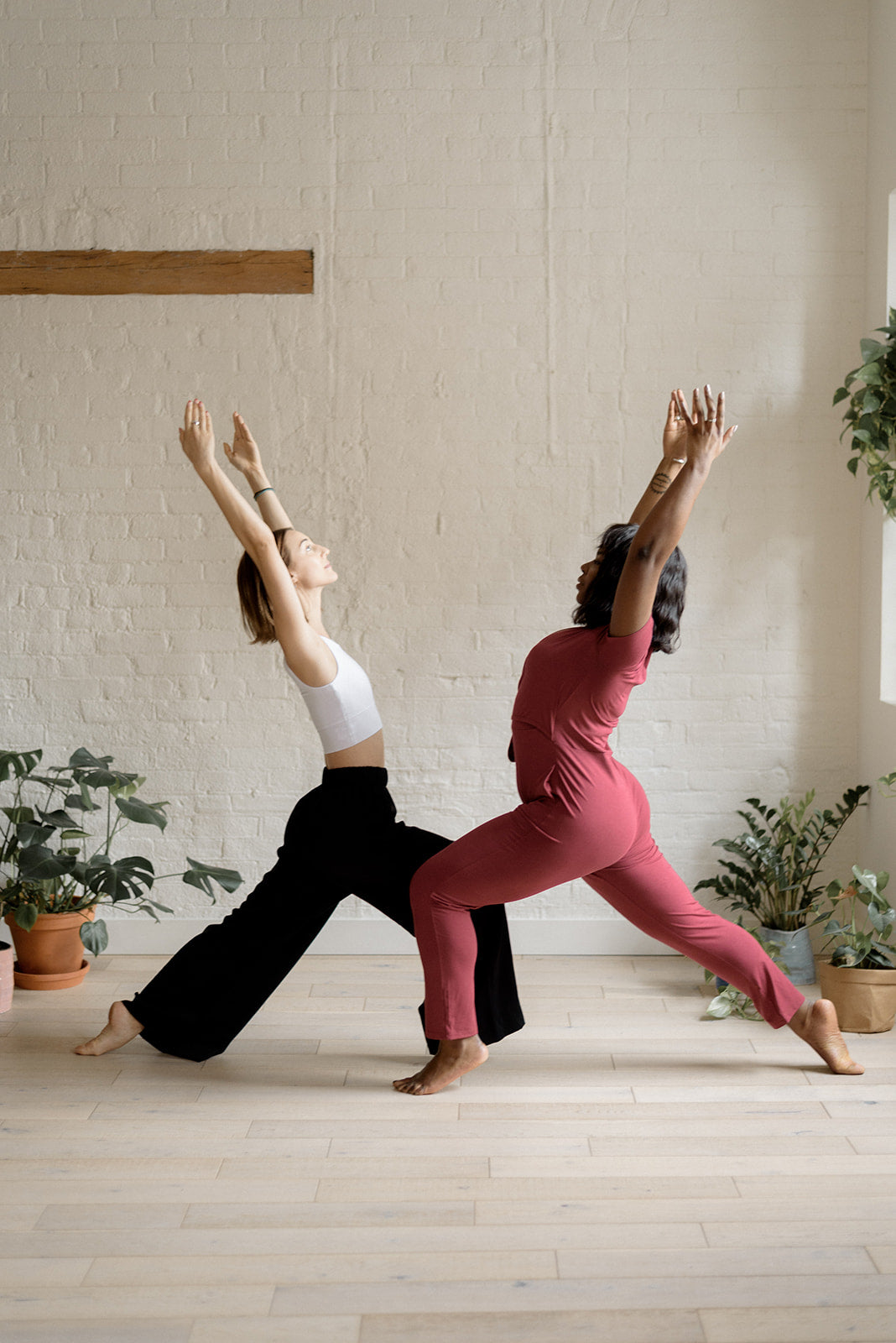
· By Megan Alexander
Pilates and yoga: what's the difference?
A quick perusal of ClassPass or conversation with an exercise enthusiast are both sure to yield many iterations of Pilates and yoga (who remembers Kirsten Cohen’s “yogalates” class in The OC)? Despite the fact that they can be mentioned in the same breath, they historically couldn’t be any more different – one was developed by a German anatomist in the early 20th century, while the other is a holistic discipline that originated in ancient India. Read on as we unpack the two inherently different practices with one important shared focus (spoiler alert: you’re doing it right now).
PILATES, A HISTORY
How it started
Before his last name became synonymous with one of the more popular forms of exercise in the Western world, Joseph Pilates first used physical exercise as a way to improve his health after various medical ailments in his childhood. Later becoming a professional boxer, circus performer and(!) self-defense trainer, it wasn’t until World War 1 that Pilates began to share his gymnastic, body-building and jiu-jitsu regimes to others. After successfully teaching his methods to his fellow inmates, they were then used to rehabilitate veterans of the war.
What it is
After the war ended, Pilates immigrated to New York City where he and his wife Clara opened a studio focused on the art of control, quickly gaining a following of like minded devotees. Contrology – which would become Pilates – focused on developing the mind-body connection through low-impact exercises with the aim of improving strength, flexibility, and posture. Within the school of Contrology, specific attention to core muscles provide support for the spine and diaphragm.
Two key components of Pilates? Form and function – while ensuring proper placement and alignment. When following an abs sequence, for example (everyone’s favourite!) we are taught to “knit in our ribcage” with the aim of promoting thoracic spine alignment – and ultimately encouraging your ribcage not to pop out.
For anyone who’s tried Pilates, you’ll know that it’s not about how fast or high you can go. It’s about careful and concise foundational work that encourages full-body awareness. On either a mat or using equipment such as a reformer, we use our body weight to provide resistance.
The diaphragm is the go-to muscle used in Pilates. Complete, thorough and purposeful inhalations (for spinal extension) and exhalations (for spinal flexion) are key to the practice.
Also in the Pilates breath work wheelhouse? Breathing with the diaphragm, staccato (short, forceful exhalations), lateral (out through the ribs), and side (one-lung) are also breathing practices that are essential to the exercise.
Similarities to yoga
There are a myriad of interpretations of both Pilates and yoga, but breath work is the magical overlap area in the Venn diagram between the two. Intentional breathing delivers oxygen and carbon dioxide to the areas being used, plus it fosters a deeper connection to the body and a more mindful experience.
YOGA, A HISTORY
How it started
Five thousand years ago, the Indus valley (which now straddles the borders between Afghanistan, Pakistan and India) – known as the birthplace of yoga – was home to one of the most advanced of human civilizations. As far as we know, there were no churches, temples, or sacred spaces – but one thing people did believe was in the transformative power of breathing.
When the Indus valley was later invaded by Iranian Aryans, religious and mystical texts emerged, containing the earliest known documentation of the word “yoga” – the science of holding still and building prana, or life force, through breathing. Over the next thousands of years, the magic of these ancient breathing methods spread throughout India, China and beyond – eventually transforming into the movement-meditation method we practice today.
What it is
On a basic level, yoga can be described as the integration of breath, movement and meditation to unite the mind, body and spirit. Through the use of deep and conscious breathing, yoga balances the nervous system. Through the twists and turns of different postures, yoga detoxifies the body. And through the focus and concentration required in these postures, yoga keeps you anchored in the (ever-evasive!) moment.
The physical aspect of yoga is just one part of the equation. Off the mat, yoga as a life practice incorporates elements of self discipline, philosophy, transcendence, and upholding an ethical way of living. The aim is to live a meaningful and purposeful life, which helps us to acknowledge the spiritual aspects of our nature.
Similarities to Pilates
As with any fitness regime or healing modality, there is no set prescription – there is only what works for you. You can practice Pilates and yoga exclusively, with the intention of receiving distinct benefits from each. Or you can practice them simultaneously, in an effort to garner an all-encompassing outcome.
There are countless modern methods that promise the seamless integration of one or both practices into your routine. You can find strength through Pilates, or seek out the spiritual through yoga. Alternatively, a restorative Pilates sequence can help soothe your system, while a fiery Vinyasa can make you sweat. How you choose to nurture and nourish your mind-body is up to you – just remember to return to your breath.
